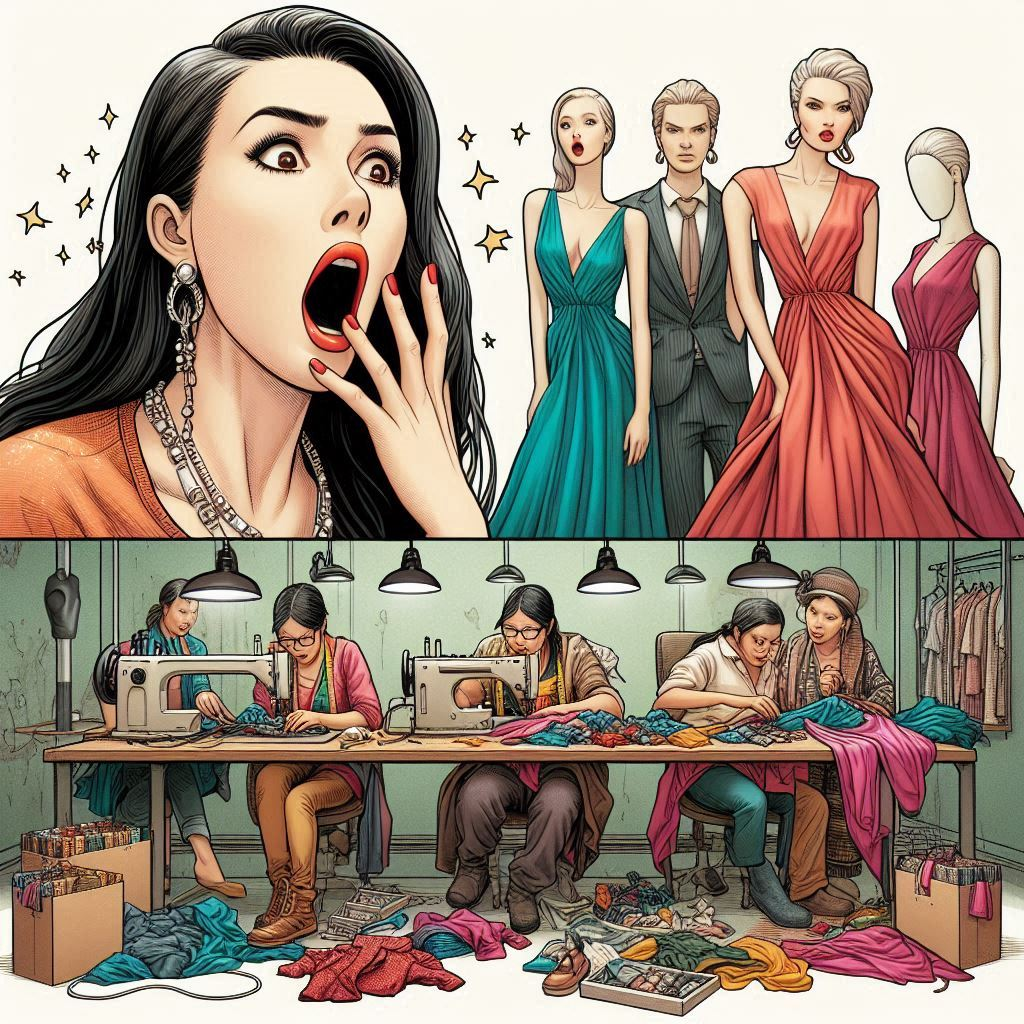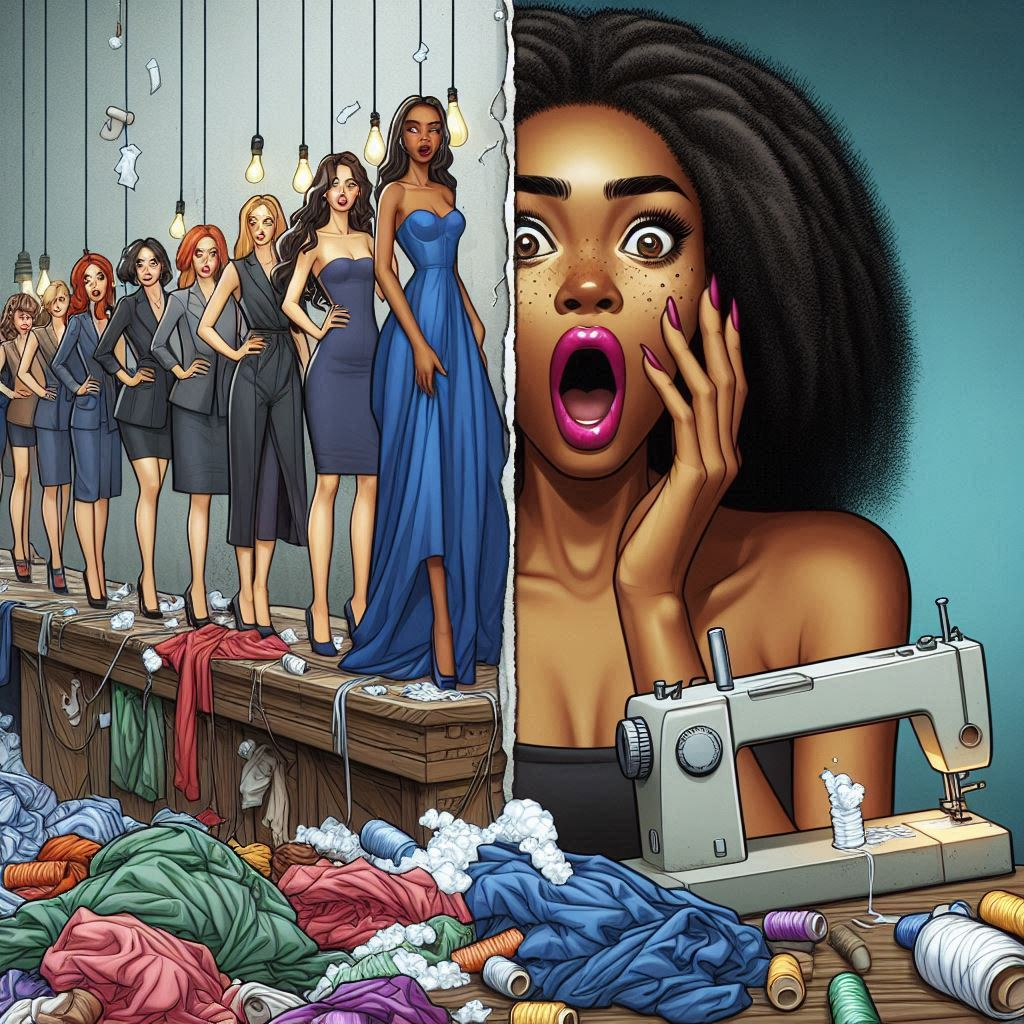Dark facts about the fashion industry frequently present a dazzling image, but it also has a darker side that is kept out of the public view.
The charm of designer brands and runway presentations hides alarming realities concerning environmental harm, immoral behavior, and exploitation.
Recognizing these unsettling facts about the fashion sector highlights the pressing need for reform and increased openness regarding the manufacturing process of our clothing.

Dark Facts About the Fashion Industry
1. Exploitation of Workers
Many fast-fashion companies rely on sweatshops in developing countries, where laborers endure terrible conditions at work, long hours, and poor wages.
Additionally, child labor is a serious problem in several places.
2. Environmental Damage
Among the most polluting sectors of the global economy is the fashion industry.
Large amounts of carbon emissions, deforestation, and water pollution are caused by the production of textiles, particularly synthetic ones.
The primary cause of a significant amount of water contamination worldwide is the dyeing process itself.
3. Toxic Chemicals Facts About the Fashion
Dangerous substances are used to treat many clothing to get finishes like waterproofing and wrinkle resistance.
These substances may be hazardous to consumers’ health as well as the environment and the personnel who handle them.
4. Waste Problem
Customers are encouraged by fast fashion to purchase inexpensive, stylish apparel that is frequently thrown away after only a few wears.
As a result, millions of tons of clothing end up in landfills each year, producing enormous amounts of textile waste.
5. Animal Cruelty
The usage of fur, leather, and wool from animals in the fashion business is well-known.
Many brutal methods, including the terrible treatment and killing of animals, are used for getting these items.
6. Microplastics
Microplastics released by washing synthetic materials, including polyester and nylon, wind up in the oceans.
Marine life consumes these microplastics, which can then make their way up the food chain and have an impact on human health and animals.
7. Body Image Issues
The fashion industry has long faced criticism for encouraging unattainable body ideals, which has been linked to a rise in eating disorders, mental health problems, and body image problems among its clientele, especially the youth.
8. Cultural Appropriation Facts About the Fashion
Fashion businesses frequently copy cultural symbols without getting consent or giving due credit, transforming them from significant cultural icons into small fads.
This could be extremely impolite and encourage negative stereotypes.
9. Unsafe Working Conditions
Reliable safety requirements are absent from many garment companies.
Events as tragic as the collapse of the Rana Plaza in Bangladesh in 2013 which claimed the lives of over 1,100 workers showcase the serious implications of putting worker safety last.
Read: Fun Facts About the Gorilla Especially the Number 3
10. Greenwashing Facts About the Fashion
Some companies falsely promote their goods as “sustainable” or “eco-friendly” to win over customers who care about the environment.
Many of these statements are false or grossly misleading a practice known as “greenwashing.”
11. Forced Labor
Forced labor is a major problem in various parts of the fashion supply chain.
There have been reports of multiple countries adopting forced labor, especially in areas where vulnerable populations are abused, to produce cotton and other products.
12. Dangerous Working Practices
Garment workers sometimes endure hazardous working circumstances, including exposure to harmful chemicals without the required protective gear, in addition to poor earnings and long hours.
Long-term health problems, like skin disorders and respiratory troubles, may result from this.
13. Fashion Waste in Developing Countries
Western apparel that is unsold or discarded is frequently sent to developing countries.
This might put the local textile industry at risk, overburden waste management systems, and harm the environment.
14. Pesticide Use in Cotton Production
One of the crops that use the most pesticides worldwide is cotton.
The usage of pesticides threatens the health of farmers and neighboring people in addition to damaging the environment.
While organic cotton is an option, its share of the world’s cotton production is still quite tiny.
15. Underpaid Artisans Facts About the Fashion
Luxury firms may demand hefty amounts for handcrafted or artisanal goods, but the people who make them are frequently underpaid and underestimated.
Their ancient crafts are occasionally exploited without just pay or acknowledgment.

16. Intellectual Property Theft
Independent and smaller designers are frequently the targets of intellectual property theft, in which big fashion houses steal their creations without giving them credit or money.
This inhibits innovation and makes it harder for smaller brands to survive.
17. Gender Inequality
Yet its beautiful exterior, gender inequality is an ongoing issue in the fashion industry.
The bulk of garment workers are women, but despite this, they frequently earn less than their male colleagues and deal with harassment and discrimination at work.
18. Overproduction Facts About the Fashion
Overproduction arises from the constant demand for new trends and collections.
Clothing brands frequently create more inventory than they can sell, which leaves them with huge amounts of unsold stock.
Rather than donating or recycling unsold merchandise, some corporations have been known to destroy it to preserve brand exclusivity.
19. Displacement of Indigenous Communities
The fashion industry’s need for raw materials like leather, cashmere, and exotic fibers can result in the forced relocation of indigenous populations from their ancestral territories.
The loss of customary means of subsistence and cultural customs may follow from this.
20. Excessive Water Consumption
Water use in the fashion sector is huge. To make one cotton t-shirt or pair of pants, millions of gallons of water are required.
Particularly concerning is this high water use in areas where there is already a water shortage.
Bottom Line
It is clear when looking at these dark facts about the fashion sector that the cost of our clothes goes much beyond the price tag.
These facts about the fashion business draw attention to important issues, including violations of human rights and environmental destruction.
We can encourage positive change and a more ethical and sustainable fashion industry by increasing our knowledge and making thoughtful decisions.
Read: Mysterious Facts About the Link Between Your Gut and Mental Health
